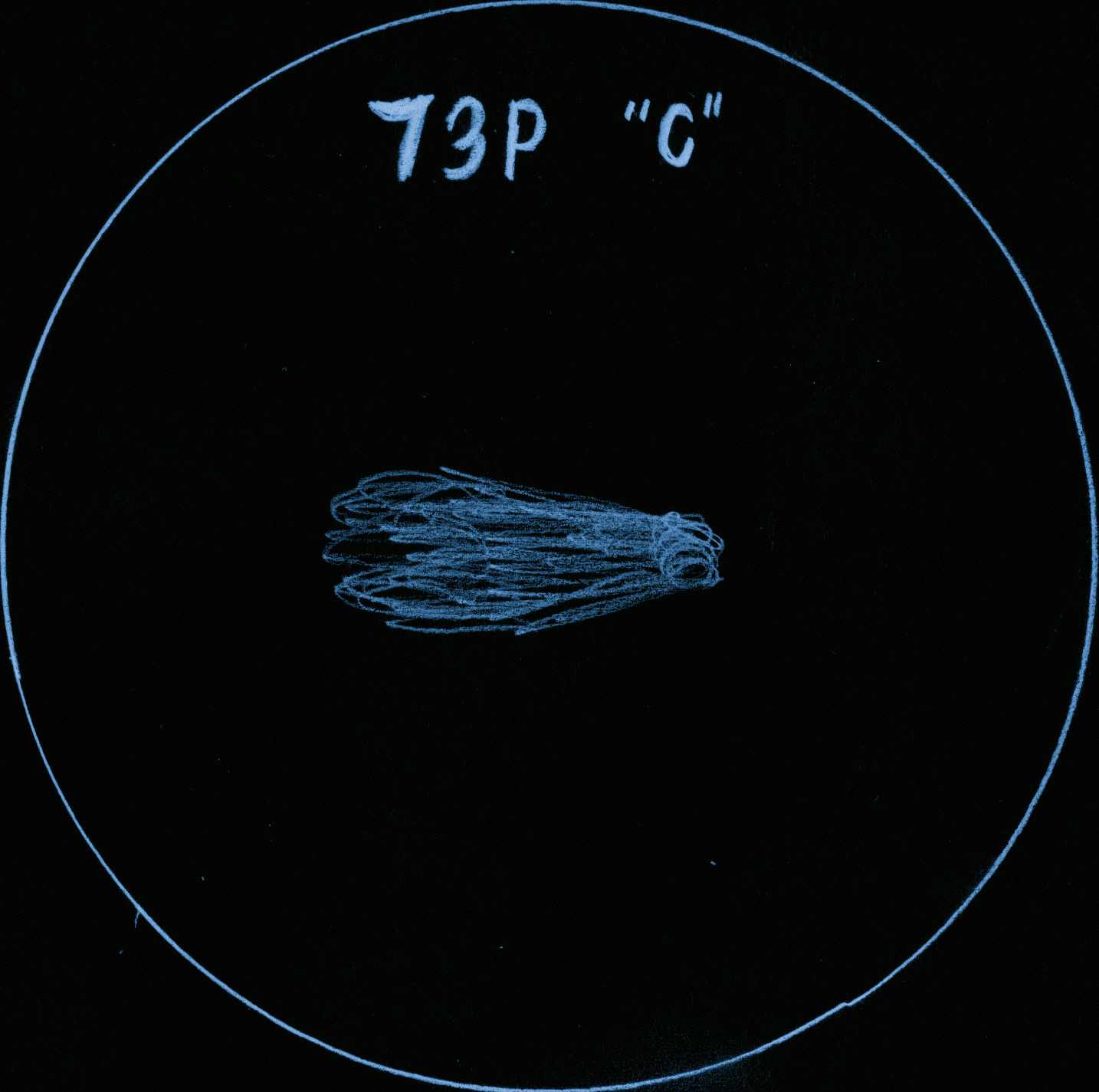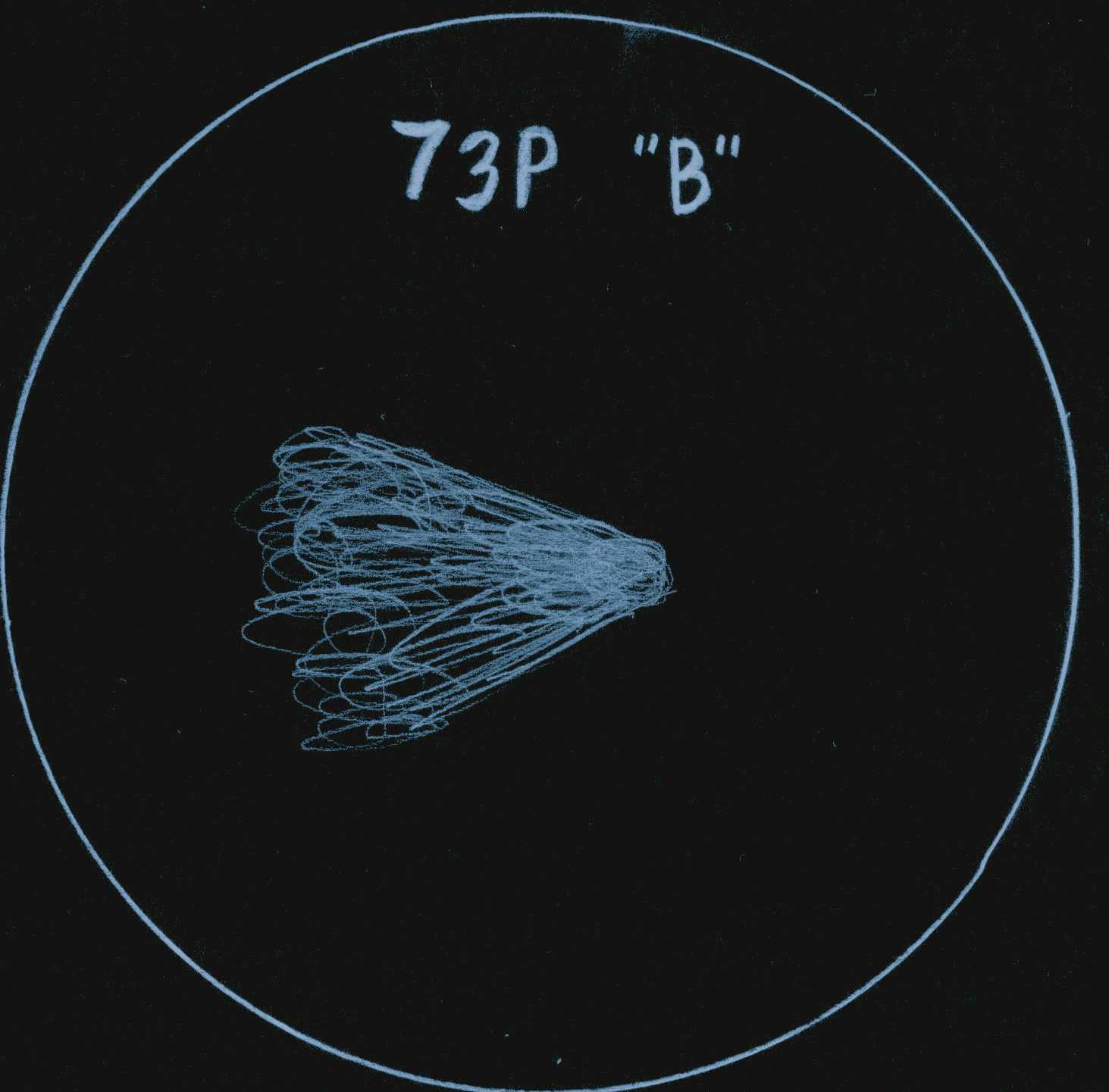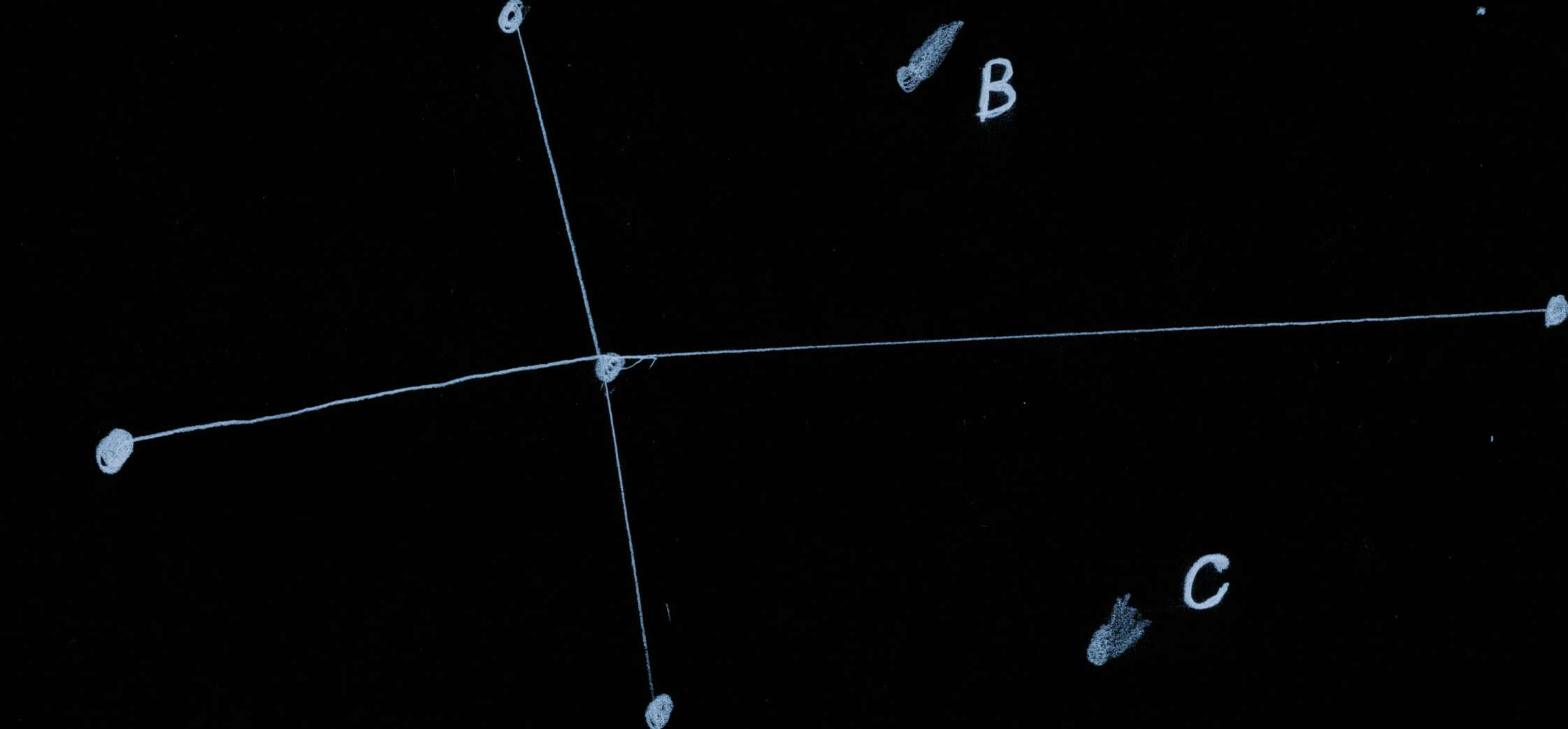BRIDGEPORT, WV (S-M) - The fractured comet Schwassmann-Wachmann 3, or "73P" in the catalog of periodic comets, will long be remembered by us for the fine show it put on in the Spring of 2006. For a few days, the pieces of the comet were so close to the Earth that one could easily see their motion minute-by-minute.
We first recall the comet in January 1996. It had just passed its perihelion, its closest approach to the Sun, and the tenuous little object just could not hold together anymore. We first learned of the breakup from the SkyLine telephone service run out of Cambridge, Massachusettes. Observations revealed that the comet was showing at least two distinct condensations, and there were reports that some people were seeing three. No doubt, we were not the only ones who were aware that the comet was due to make a close pass by the Earth a decade later. We eagerly awaited the 2006 apparition.
The comet has a period of just five years, but the 2001 apparition was not too favorable for viewing from Earth. Finally, in early 2006, larger observatories using imaging equipment were reporting observations of the comet. It was clear that the comet had shattered, and as it drew closer to the Earth, more and more pieces became visible. Pieces of broken comets are given letter designations, and the fragments B and C were clearly the largest and brightest. We had our first view of the comet on April 16. Through a bright moonlight, we could just make out fragment C, at around magnitude 9. There was no sign of a tail and the little comet was just a hazy patch of light.
Things picked up as April progressed. Not only did the fragments brighten, but the apparent motion became greater each day, and the separation of the fragments appeared larger and larger as the comet grew nearer. It is rare for events in the sky to provide such a three dimensional feeling of motion. By April 23, a broad tail was showing on fragment C. Cloudy weather intervened for a while, but on the morning of May 11, we enjoyed excellent weather as the broken comet was nearing its closest approach to the Earth.
The pieces of the comet were aligned across a broad patch of the eastern sky before dawn. Fragments B and C were both in Cygnus, near the bottom of the Northern Cross. They were around magnitude 6.5, and just a little too dim to see with the unaided eye. With the comet only about 7.5 million miles away, its motion against the background stars could be seen in just a few minutes' time, and fragments B and C were both showing very obvious tails. The tails were not more than 1/2 degree long, but the view through the telescope was very similar to a great comet as seen with the unaided eye. We watched the pieces of the comet until they disappeared in the bright light of dawn.
The show put on by Schassmann-Wachmann 3 did not last for long. The comet began fading in the days which followed. For us, more rainy Spring weather prevented any further observation of the comet.
The comet will make an even closer pass by the Earth in 2022, but no one can say what condition it will be in at that time. Perhaps all that will be seen will be a fantastic meteor storm, or perhaps we will get a high speed fly-by. Whatever may occur, we are once again looking forward to an apparition of the comet Schassmann-Wachmann 3! - GW
Copyright 2008 Starry Mirror



The
TM
Astronomy From West Virginia
REMEMBERING THE APPARITION OF THE COMET SCHWASSMANN-WACHMANN 3 IN THE SPRING OF 2006



Depiction of the two major fragments' tails as seen on the morning of May 11, 2006 in an 8" reflector at medium power.
A depiction of the positions of the two largest fragments in the Northern Cross, looking east on the morning of May 11, 2006.